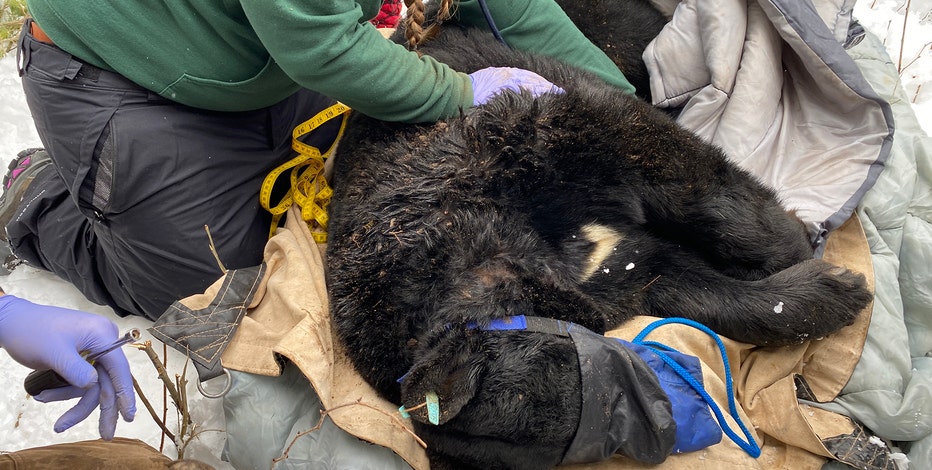Firearm hunting season in Michigan returns this week - here's everything to know
(FOX 2) - Firearm season returns this week for Michigan hunters, with wildlife regulators expecting an abundant season for deer harvesting after a mild winter last year.
That is, at least for the Lower Peninsula. A brutal winter in the Upper Peninsula means there may be fewer deer along parts of Lake Superior. But there is good news for UP hunters - a zone designated for chronic wasting disease surveillance has been lifted in several counties.
This will also be the second year that hunters will use the state's new online harvest reporting tool on the Department of Natural Resources website.
Here's what to expect for hunting this season:
When is firearms hunting season?
The regular firearms season goes from Nov. 15-30.
Chronic Wasting Disease Status
CWD is on the move in Michigan and so are the areas where the state will be watching for possible cases.
For the Upper Peninsula, a lone deer with CWD began a region-wide surveillance zone. Since 2018, nearly 2,100 deer were tested with no other cases coming up positive. As a result, the DNR recommended to the Natural Resources Commission to remove the zone.
It's not the same story for the Lower Peninsula where testing will be conducted in 13 counties. The state's goal is to surveil areas that may have surges of CWD to help best catch the illness before it spreads further.
This year, Antrim, Benzie, Charlevoix, Emmet, Grand Traverse, Hillsdale, Isabella, Kalkaska, Lake, Leelanau, Manistee, Missaukee, Osceola and Wexford counties will be surveilled by the DNR. To accommodate the testing their harvest, hunters can use drop boxes, staffed submission sites, or other processing centers that can be used. Learn more here.
Online harvest reporting
The DNR rolled out a new harvest reporting system last winter.
Officials called it a "huge step" for the agency as it sought to better track kill data and to do it much quicker than in the past.
Hunters can report their harvest data on the DNR's website or through the department's app, which is available for iPhones and Androids. Hunters with questions about the new requirement can check the FAQ page here.
You'll need your DNR license number and date of birth when you report the harvest online. Find out more here.
Hunting Outlook
Upper Peninsula
The winter last year was severe and included several major snow storms that led to some adult and fawn mortality among deer. There were no major die-offs from the hard winter.
However, according to the DNR, locations along Lake Superior's shoreline and in western counties of the UP have been sparse for deer populations. Southern portions of the UP have had more sightings of deer.
Northern Lower Peninsula
A more mild winter last year means deer populations will remain more plentiful.
The DNR said hunters should be on the lookout for both red oak and white oak trees due to a major round of hard masting - when foliage sheds acorns and other nuts.
There has also been good antler growth this year compared to previous years. However, hunters are encouraged to harvest a doe in place of younger bucks with smaller antlers to help manage the state's herd.
Southern Lower Peninsula
There are also abundant deer in the lower portion of the state, thanks to a mild winter. However, drought-like conditions in the spring mean a smaller crop harvest could impact deer populations. Hunters' success may be reduced by the diminishing of standing cover from trees thanks to the dry season.
When a region experiences drought, it can be associated with epizootic hemorrhagic disease. The DNR said discussions of the disease have been in deer circles for the summer. However, there has only been cases reported in Washtenaw County during the peak period of EHD.
There is a return of some antler point restrictions for hunters on their second tag and deer combo license. There will be four-point restrictions on second tags in 19 counties while those with a deer combo license must dedicate their second tag toward a buck with four points on one side.
Find more info on the antler point restrictions here.
Hard masting
When trees produce a mast, they come in two forms: hard masts like acorns and nuts, and soft masts like berries and fruits.
For hunters, paying attention to trees that are producing lots of seeds will be key to identifying places where bucks may congregate. It may lead to a higher success rate for those that plan ahead.
This year was a busy year for trees like oaks and acorns are expected to be widely distributed.
According to a report from Bridge Magazine earlier this fall, there was an overproduction of seeds from oaks that dropped an abnormal number of acorns. It made the squirrels happy and likely will do the same for deer.


